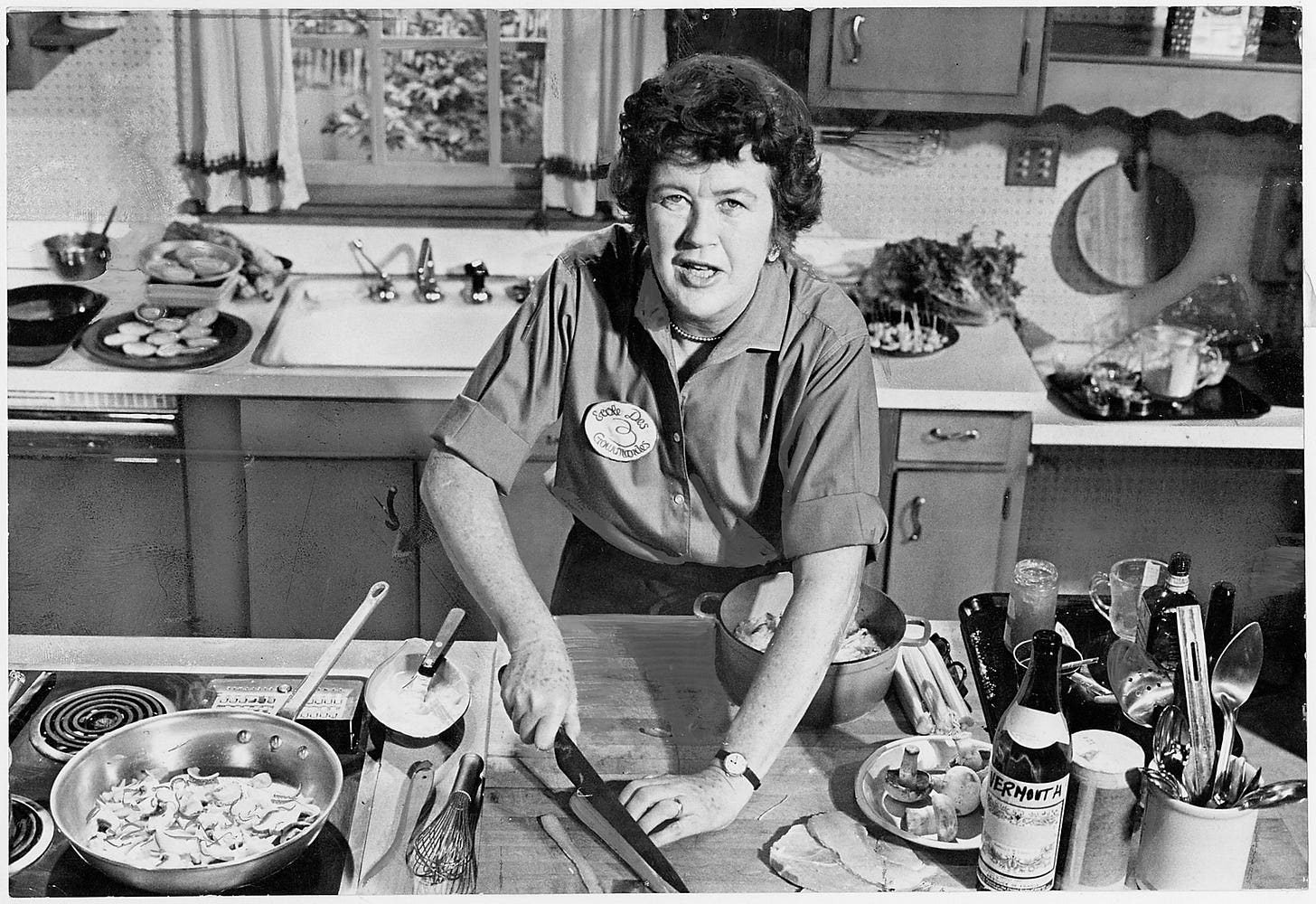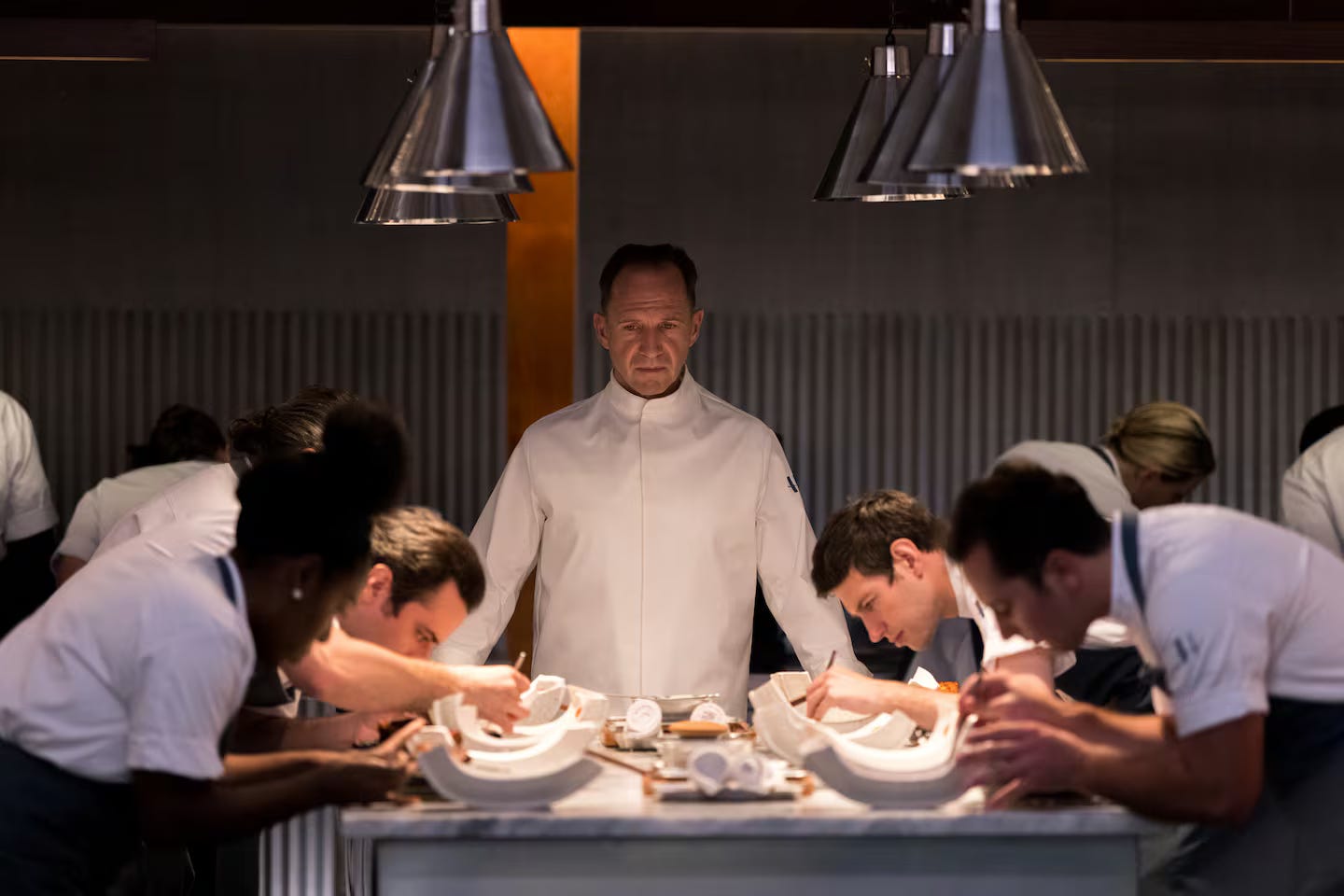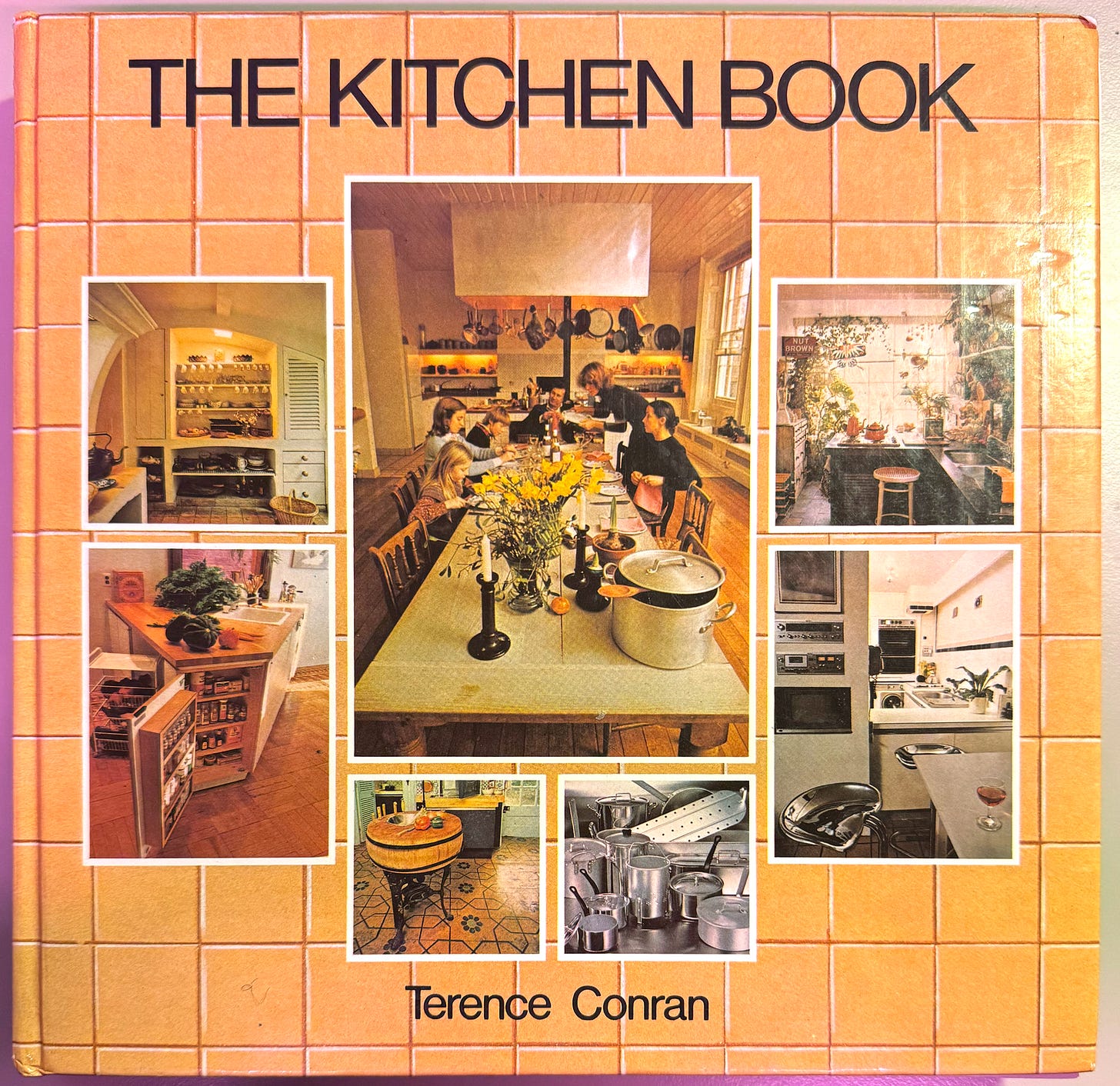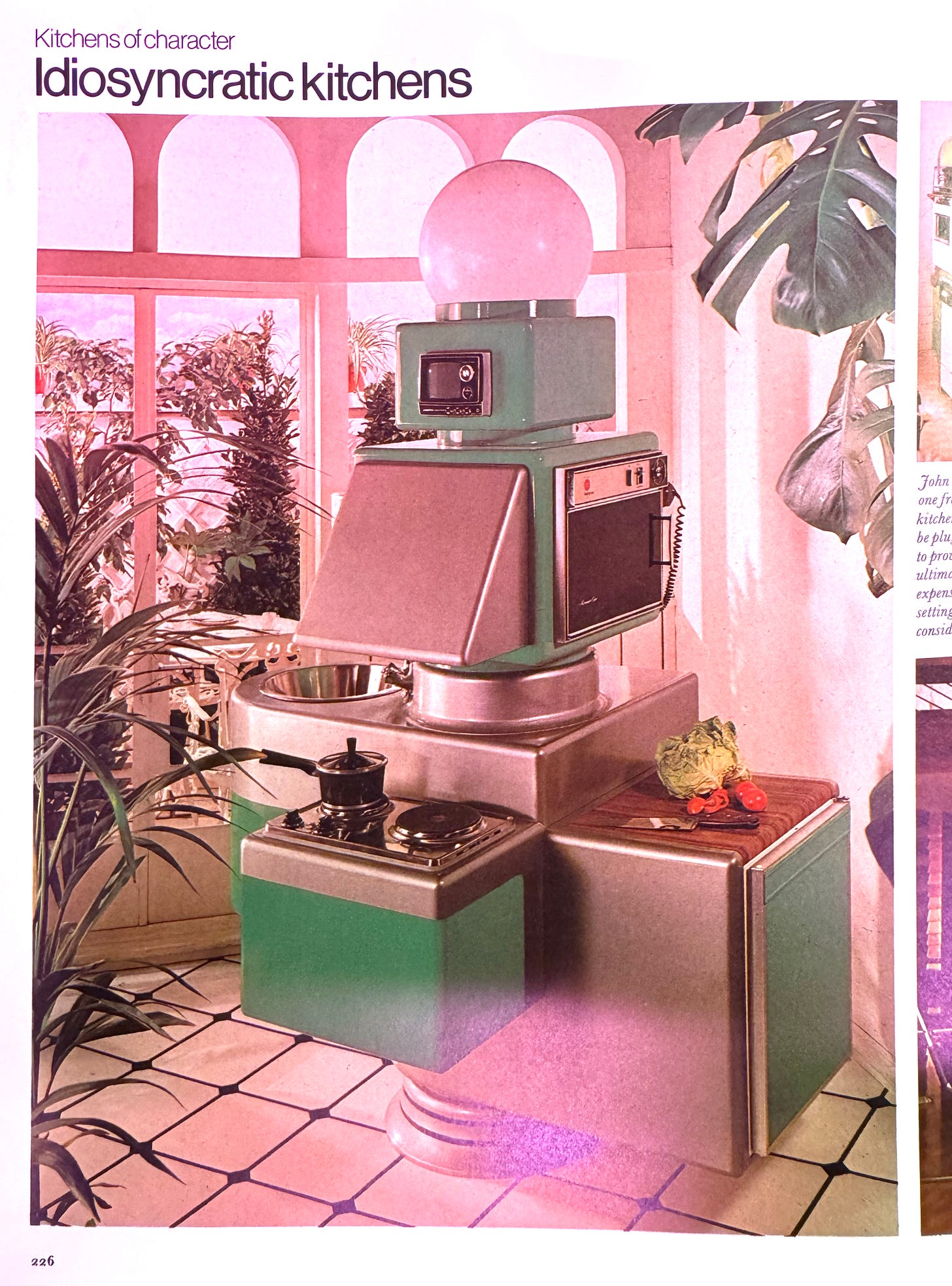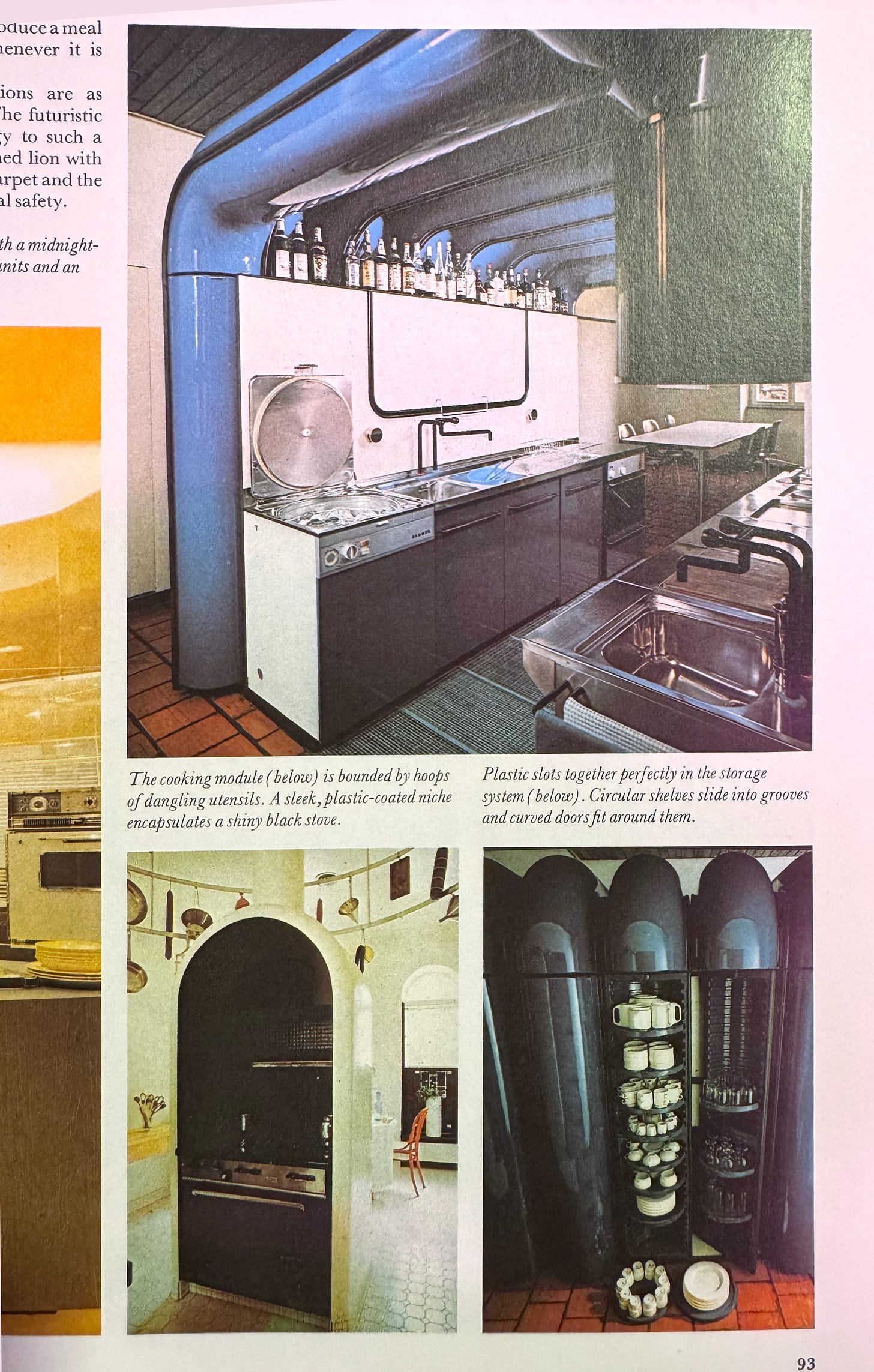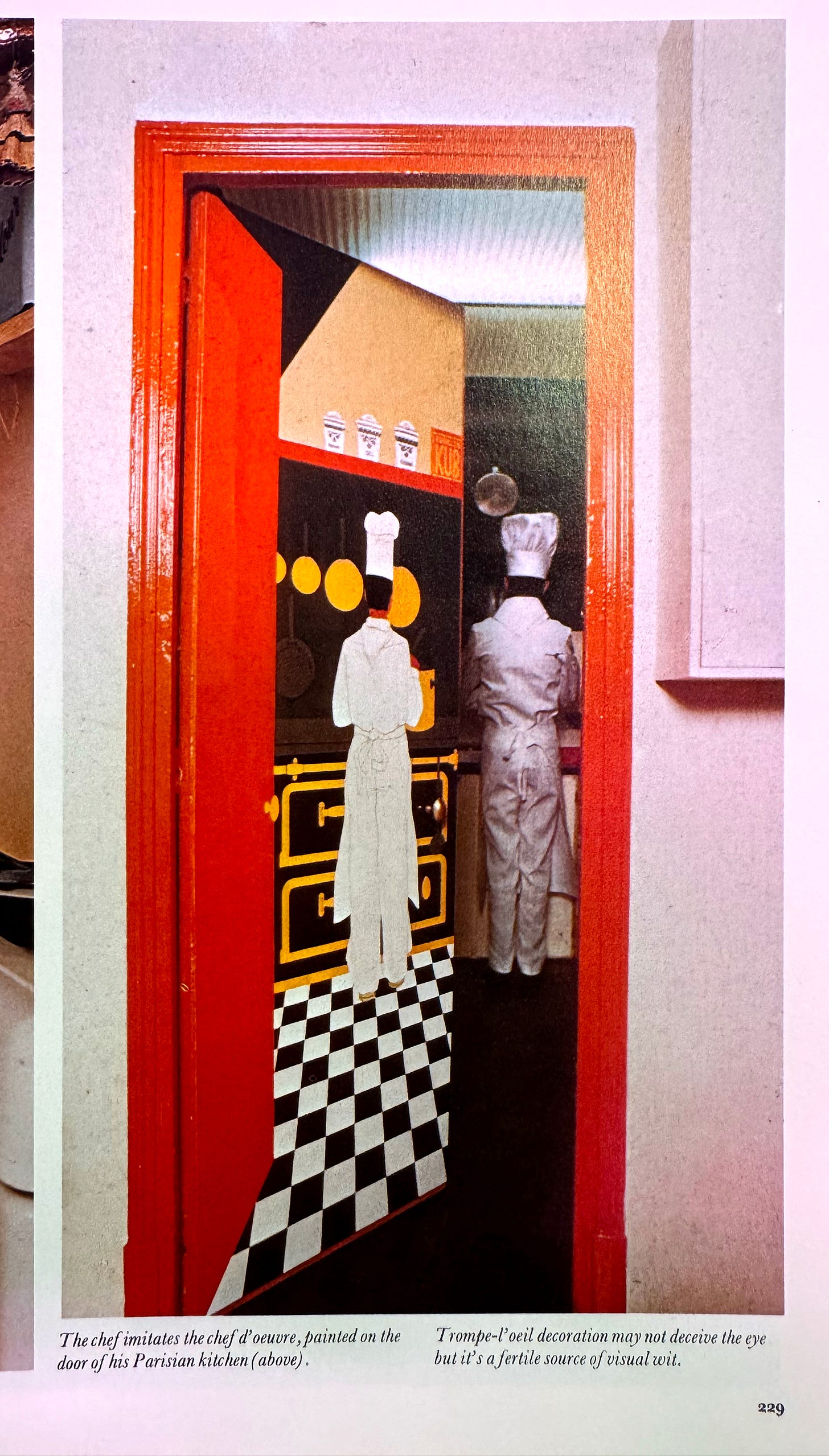Daytime TV continues to be the land that interior design forgot (in the UK/US at least), and the weekend is no exception. The chat show masquerading as something slightly more highbrow - the cookery programme - is de rigueur on a Saturday or Sunday morning. It makes programming sense: food is something that all of us have some interest in (even if only in consuming), whilst the acts of cooking and eating have always been ways to connect with one another.
As I was pondering this week’s newsletter, I (inadvertently I hasted to add) tuned in to watch ‘James Martin’s Saturday Morning’ on ITV. Upon witnessing the live-laugh-love1 design aesthetic of the show set, I gasped “WOW how long ago was this made??” The answer was “Today. It’s live TV.”
I couldn’t quite believe this set had come into existence within the last decade. The La Cornue-inspired kitchen island (the original will set you back £200k+) takes centre stage, as the word ‘LEGUMES’ is spelled out in collegiate lettering and is propped up on top of a proofing oven. A bonsai tree sits atop the the kitchen counter whilst an empty batterie de cuisine (more on this later) hangs sinisterly from the ceiling. I’m trying to imagine the moodboard for this… 😵💫
Aghast at the sight of the giant wall clock better suited to a garden centre, I changed channels, only to find what is essentially the same tv show on a different network. The show’s lucky guests sat chatting around what could be only be described as a ‘feature table’ - the base of which was a tree stump (yours for a mere £1500).
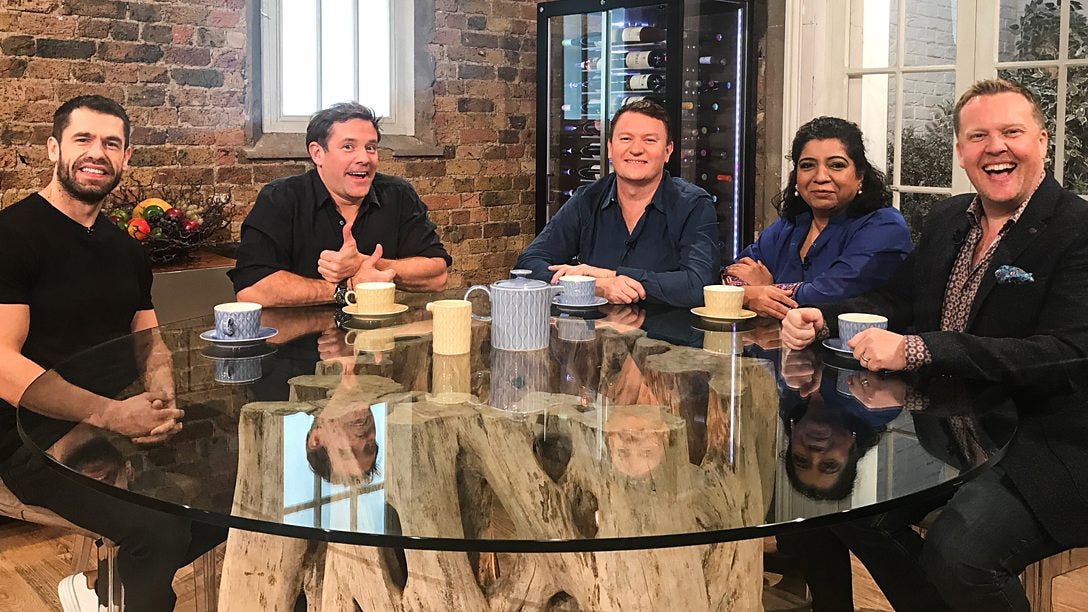
The more I thought about this, the more I wondered a) why are these sets so bad and b) who are these kitchens designed for? Surely not for the chefs, as these aren’t the professional kitchens that a well versed cook would be accustomed to. For the guests? Doubtful. So then, for us, the audience…? Is this what aspirational kitchens look like on British TV in 2025?
Thinking back to kitchen sets of television gone by, the benchmark seemed much higher. Delia Smith’s 1970s all pine kitchen feels very modern (for the time) and Scandinavian in aesthetic, whilst Julia Child was one of the first tv chefs to show a more ‘domestic’ kitchen (and way of cooking) than had been televised before. Lest we forget the iconic midnight snacking scenes of Nigella in her dressing gown, or Jamie Oliver sliding down the spiral staircase in his first series The Naked Chef. It feels like these shows pushed the boundaries of cooking, domesticity and interior design.

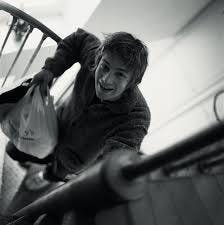
So what happened?
Firstly, the kitchen as a location has become mainstream. Home cooking is no longer the sole domain of the wife (thankfully). It feels ironic, given our ever increasing appetite for takeout and home delivery, that the kitchen is now somewhere that all members of the family feel comfortable. Today, the kitchen serves as the room in which to show off one’s wealth. A legit La Cornue style kitchen sits in almost every celebrity’s home, at a cost often exceeding £500k. Do these celebrities actually cook? I suspect not.
Secondly, the kitchen is now a place of gathering rather than of ‘doing’. A location designed for the assembling of nibbles, pouring of wine, or the re-plating of takeout food. The kitchen and dining room have blended today, and the dining element seems to have won.
Just as the kitchen is no longer a place of necessity, nor is it somewhere as dangerous or mystical as it once was. The secrets of the professional chef and their high-intensity, high-heat domain have now all but been revealed during the course of the past 60 years of cookery shows. In order to surpass this, we’ve now leaned into the dramatisation of the high-stress kitchen in the form of shows like The Bear, the anxiety-inducing one-take film Boiling Point, or the most extreme example - The Menu.
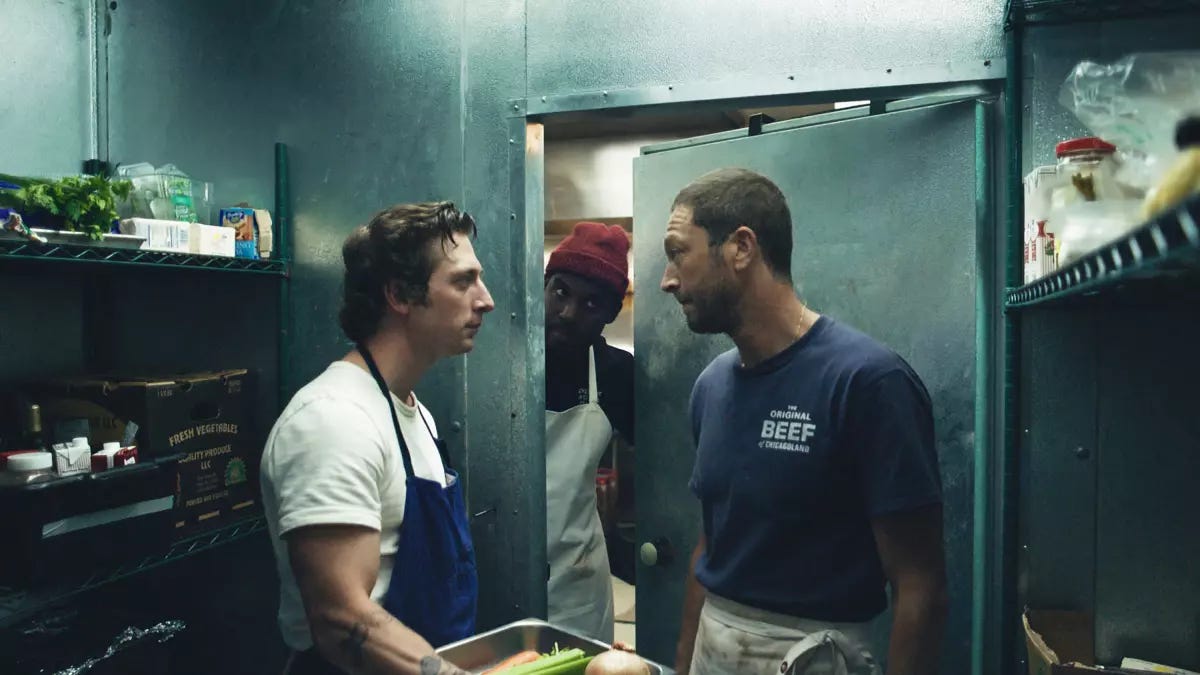
This 2022 horror/comedy has much in common with the much-awarded Triangle of Sadness or even The White Lotus, in that it takes revenge upon the über-wealthy by luring them to a remote (read: exclusive) location where their greed ultimately prompts their demise. Ralph Fiennes plays a culinary genius who’s grown sick of his vain and greedy clientele, and decides to take matters into his own hands. Several figures from the world of fine dining were brought on as consultants for the film, including chef Dominique Crenn (of 3* Michelin Star San Francisco restaurant Atelier Crenn) who created several dishes for the film, and director David Gelb (of Jiro Dreams of Sushi and Chef’s Table), who was brought on to recreate the filmmaking style from his previous documentaries.
As much as I enjoyed The Bear, I did find it a bit too intense (I know that was the point, but I’m a sensitive soul). In keeping with our current political climate, maybe it’s time to embrace a new era of chaos in the kitchen. Which brings me to Keith Floyd. A restaurateur, television personality and gastronaut, Floyd hosted cooking shows for the BBC and published numerous books combining cookery and travel.
Above: Keith making a Roman centurion stew that doesn’t quite pass the test.
He pioneered the idea of taking the cookery show out of the studio and into the wild - whether that be on a boat in rough seas, halfway up a mountain or in the kitchen of a local rugby club. His eccentric style of presentation, usually with a glass of wine in hand (relatable) was incredibly endearing. I’m ready for more of this unscripted and slightly bonkers cookery style and set, but until I find it, I’ll just watch these re-runs and look photos of him drinking ‘drinking booze and having a lovely time’.
Book:
The Kitchen Book, by Terence Conran
All this kitchen chat reminded me about one of my favourite vintage interior design books – The Kitchen Book by Terence Conran (1977). Part design inspiration, part practical kitchen DIY guide, this book delves into the work and home kitchens of famous chefs, whilst also providing a list of how-tos when it comes to one’s own kitchen design.
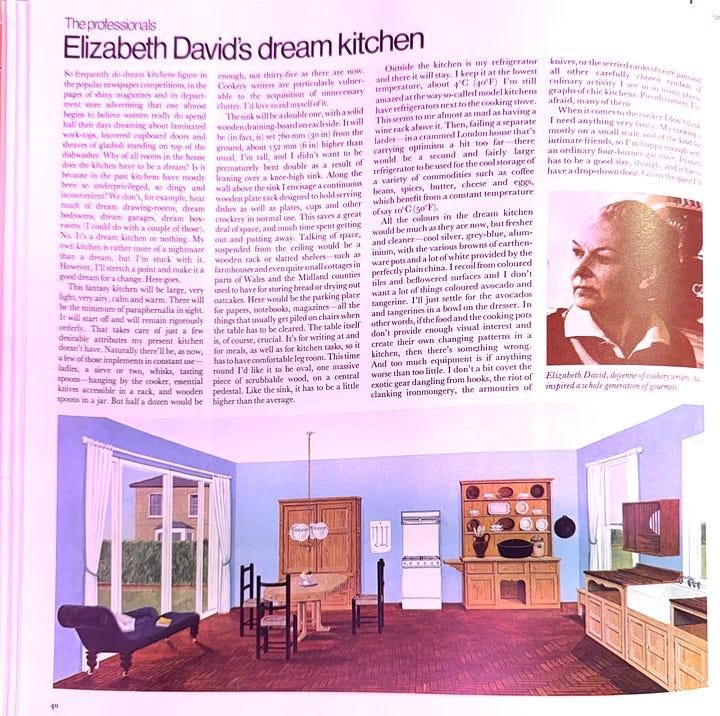
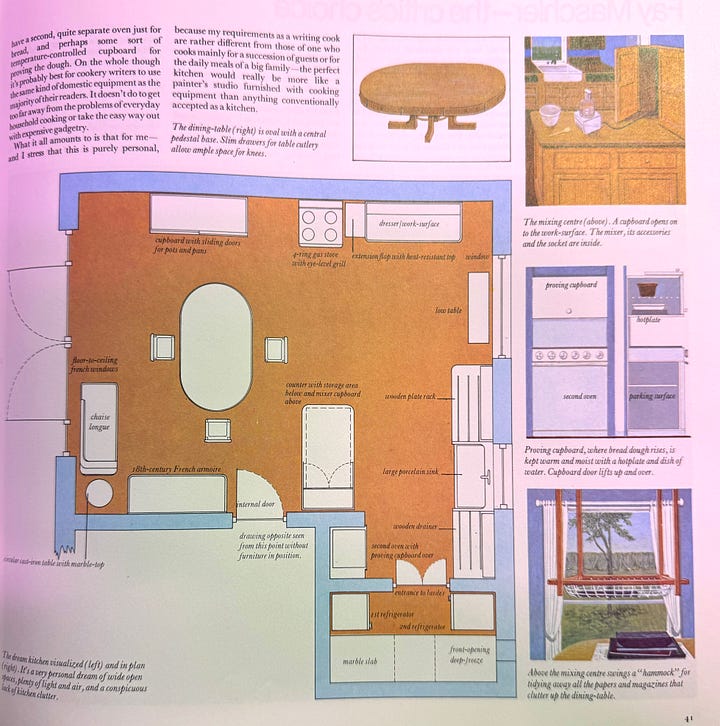
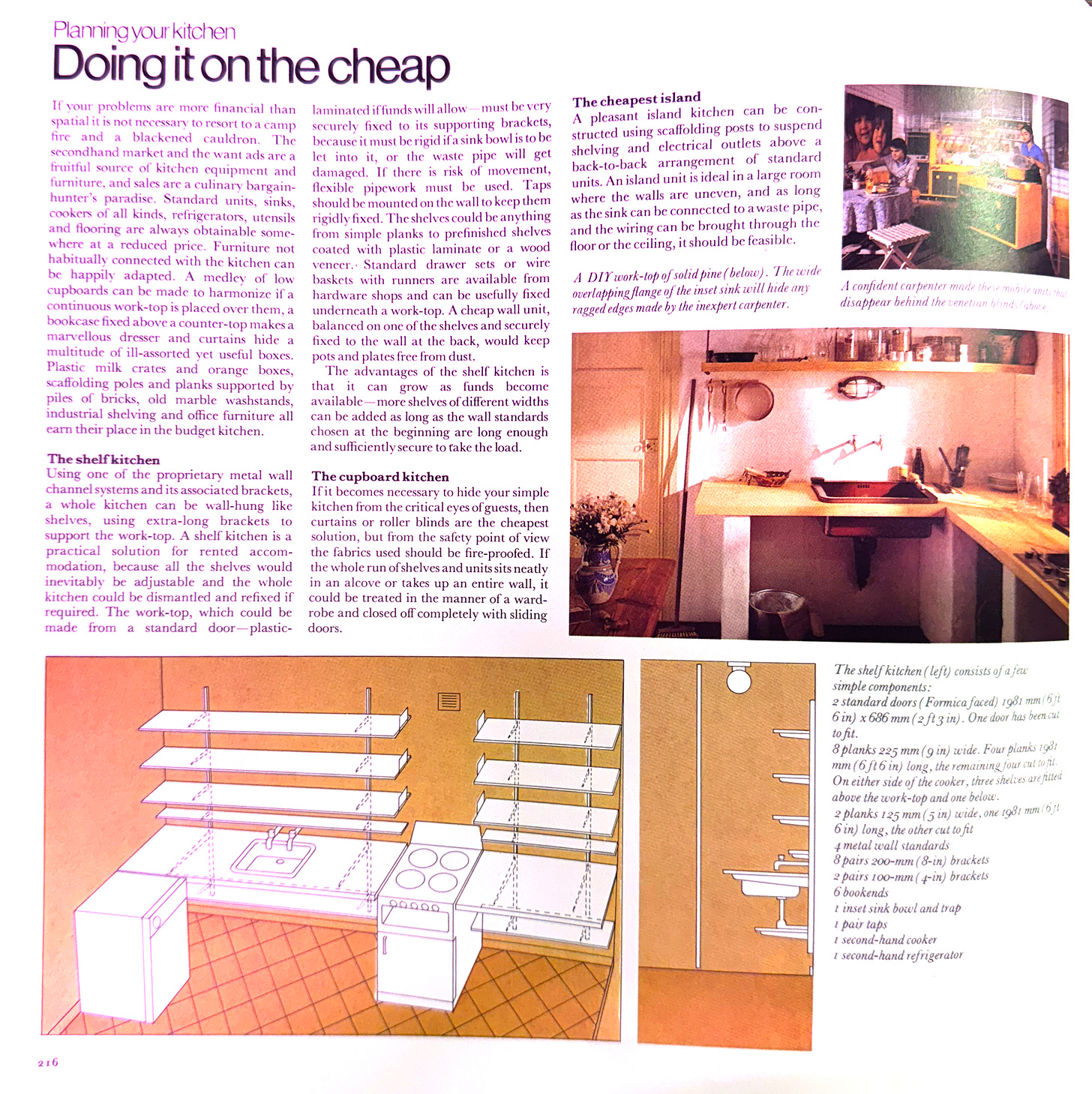
I thought the ‘Doing it on the cheap’ section was particularly interesting, as this type of DIY is now almost defunct since the arrival of the Ikea kitchen. The modularisation of not only our kitchens, but also interior and architectural design in general has removed a lot of the individuality from our spaces, particularly in the home sphere.
What I enjoy most about this book is the combination of utility and character. The kitchens are all functional, and the book lists the ideal starter kit for your ‘batterie de cuisine’ - the range of tools and pans you need for a fully functioning kitchen (thank you for reading this far). But alongside this is a sense of personality and lightheartedness. The kitchen should be a place of nourishment, but also experimentation and character. Hopefully we’ll see some more of this on our daytime tv shows!
I’d love to know if you have any interesting cookery show sets that you remember fondly. Comment below and let me know 👩🏻🍳
Until next week,
Clare x
I am planning a post on typography within the home, begging the question - does it ever work? Let me know your thoughts.






